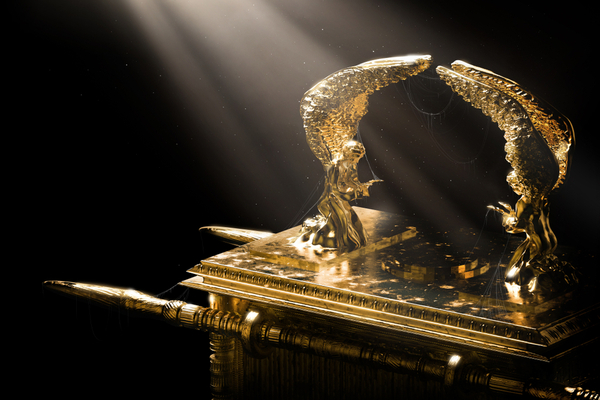Why does it matter that the ark was made of gold and wood?
By Rabbi Ari Enkin, Rabbinic Director, United with Israel
This week’s Torah portion is “Teruma” (Exodus 25:1-27:19) and with it we begin a series of Torah portions discussing the world of the Tabernacle, the sacrifices, and everything in between.
The Tabernacle, known in Hebrew as the Mishkan, was the portable synagogue that accompanied the Jewish people throughout their forty years of wandering in the desert. At every encampment it would be set up and when it was time to leave it was easily disassembled. A mobile house of God.
The Mishkan, and later, the Holy Temple, contained many vessels, some of which are famous, such as the Menorah and the holy Ark. There were also different rooms, such as the “Holy” and the “Holy of Holies.” The Ark was kept in the Holy of Holies which could only be entered by the High Priest (the holiest man) and only on Yom Kippur (the holiest day).
Let’s take a look at the Ark which was ostensibly the holiest vessel in the Mishkan and Holy Temple.
The Ark contained the Ten Commandments, including the pieces of the original Ten Commandments that were broken and smashed to smithereens by Moses when he came down from the mountain and saw the people worshipping the Golden Calf. The Ark also contained the first Torah scroll that was handwritten (of course!) by Moses. On top of the Ark were the golden Cherubim, angel-like statues with the faces of children.
It is not widely known, however, how the Ark was constructed. Although there is repeated mention of “gold” everywhere, it wasn’t made from pure gold as many mistakenly believe. As the Torah says, “And they shall make an Ark of cedarwood.”
So what’s going on? Was it made from wood or gold? The answer is: both. A wooden ark was placed inside a golden ark. Then a second golden ark was placed inside the wooden ark. As such, the holy ark was made of three layers: wood that was sandwiched between two layers of gold.
There are many beautiful commentaries on the wood and gold combination that was the Holy Ark. For example, wood represents imperfection, cracks, lowliness, and the like. Gold, of course, represents perfection, wealth, and stature. One such teaching is that a person must do his best to be “gold” on the outside even though he might have some “wood” on the inside. Nobody has a life of “pure gold.” We have to realize that everyone has their challenges, and everyone is fighting a battle. Just because it looks like someone is living a life of gold, well, don’t be deceived.
Another teaching is that the wood in the center of the Holy Ark represents growth. Wood comes from a tree which is alive, and for the most part, always growing. It needs to be nurtured and tended to.
So it is with us. We must always seek to be growing whether it be in the spiritual dimension and even the social and material dimension. We need to be like the fish who swim upstream always going against the currents. We should never be happy with where we are, we must always be seeking to go “upstream” and with these efforts we will see “gold.”
For more insights by Rabbi Enkin on this week’s Torah portion, click on the links below.
Parenting Advice from a Mysterious, Angel-Like Source
The ‘Marriage’ That Lasts Forever
How Holy Intentions Can Transform the World Around You
Use Visualization to Make Your Dreams Come True!
Every Synagogue is a Miniature Temple of God
Bring Joy to Israeli Soldiers - Send Winter Care Packages!
We are honored to thank the young men and women of the IDF who risk their lives every day to defend the citizens of Israel.
Join us in sending winter care packages and personal notes of support to Israeli soldiers who are out in the cold all day.
Warm up a soldier's heart with essential winter wear including fleece jackets, hats, gloves and more. Keep an entire unit warm!
THE SOLDIERS REALLY APPRECIATE YOUR LOVE AND CONCERN!
Click Here to Send Your Gift and Personal Note to Israeli Soldiers

